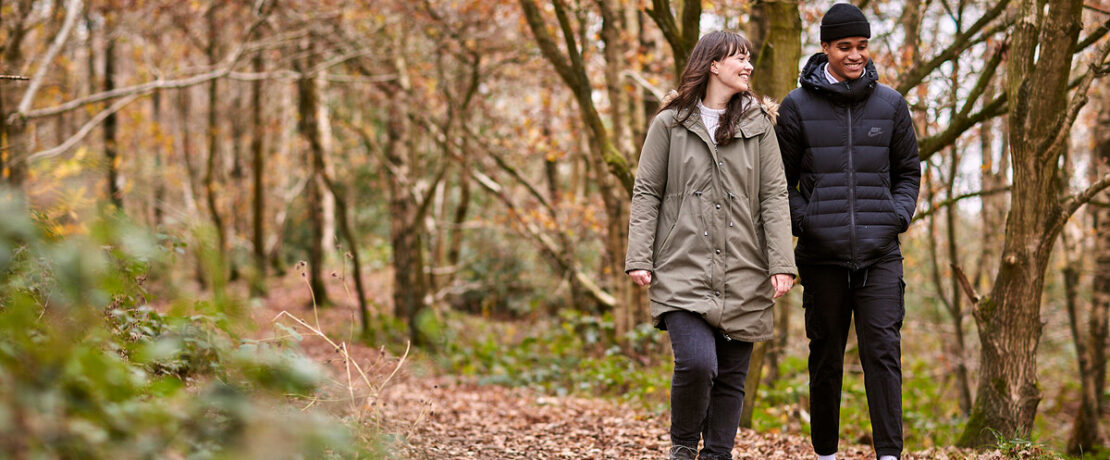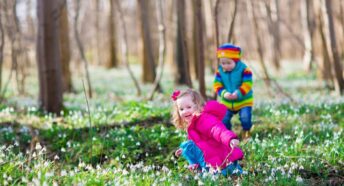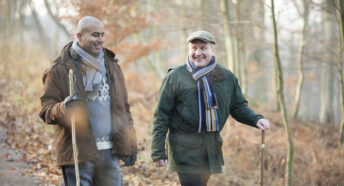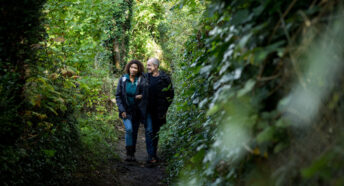Coming to the countryside near you: wildlife in November
As the nights pull in and the days cool off, nature writer Alexandra Pearce-Broomhead gives some insight into the sort of wildlife you might spot in the countryside in November.
Winter has arrived. The clocks have gone back, stretching the mornings ever so slightly, whilst the dark nights draw in ever closer. Fires are lit to ward off the child of the first frosts that settle across the landscape, blanketing everything in glittering white. Mists roll in from the sea and rise from the valleys, before being burnt off by the winter’s sun or showered away by a deluge of rain. Ivy berries provide much needed sustenance for the invertebrates and birds as the land drifts into its wintry sleep. Animals go into hibernation, whilst long tailed tits huddle together on branches to keep warm and the last of the red admirals and commas cease flying.
Starlings
Around October, groups of starlings seem to become more noticeable. Lined up on fences or gathered on church roofs, they chatter to each other with their unique range of sounds including clicks, whistles, chatter, tweets and even imitations of other birds, people, and inanimate objects (I once heard one imitate some machinery).
As it gets colder, starlings take on a behaviour that leaves us both mesmerised and confused; murmuration. Murmuration is when flocks of birds gather in the sky to fly in unison in a swooping manner which resembles mesmeric dancing, creating stunning shapes overhead. We aren’t totally sure why they do this, but scientists believe it is to trick potential predators as the birds do it at dusk before gathering in their roosting spaces for the night. By flocking together, they are less attractive to potential predators. But we still have no idea how they manage to choreograph their movements so perfectly.
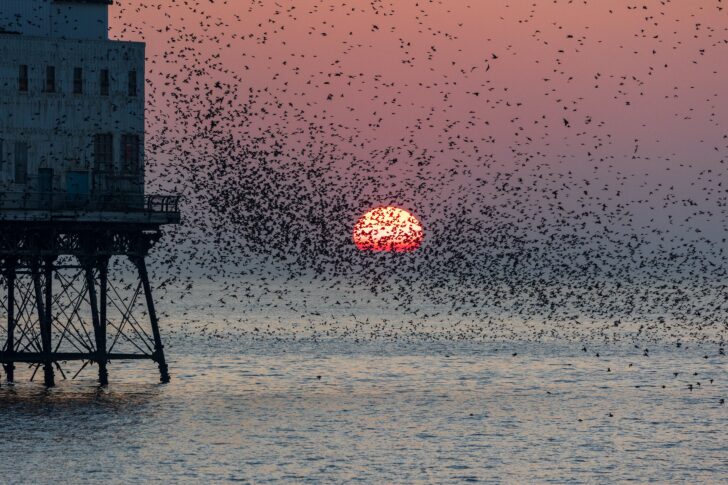
Starlings aren’t the only birds to murmurate, although no other does it quite so beautifully. Corvids will engage in similar behaviour around their roosts and in January, I make an annual pilgrimage to watch a flock of golden plover dip and dive over agricultural land, collectively switching between black and white with each turn.
Spindle berries
There is no tree that puts on an autumn-winter display quite like the spindle. As the year draws to a close, the spindle tree fruits from around September to around November, with bright pink fruits that resemble flowers with large orange seeds at the centre, as their leaves turn auburn and begin to drop. The striking colours attract a multitude of wildlife, many of whom enjoy the fruit; birds, mice and even foxes will eat the fruits, grabbing the chance at a good meal before the winter fast sets in.
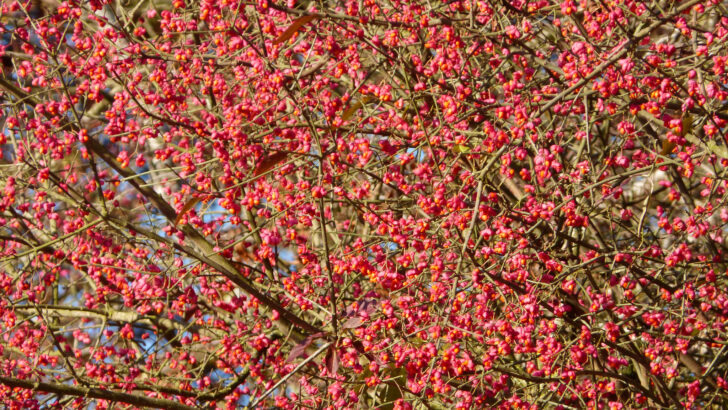
Spindle is toxic to humans however, so it’s one for us to avoid! By the end of November, the fruits and colour will be gone, and the twigs will remain bare until next spring. To catch a glimpse of a spindle at its most glorious, check out your local woodland or hedgerows, where it prefers limestone soils.
Witches broom
When they shed their leaves, trees’ hidden secrets are revealed. From swathes of lichen to bunches of mistletoe, there are lots of treasures that we don’t see for the rest of the year. One thing revealed at this time of year is ‘witches’ broom’. These are bundles of twigs that grow abnormally on the branches of certain trees such as hornbeam and cherry, but particularly birch. These entanglements of twigs form when lateral buds multiply rapidly, causing excess twigs to form and grow in a disorderly fashion. They have the appearance of an unkempt wooden broom, hence the name, however they can be easily mistaken for abandoned nests depending on the growth.
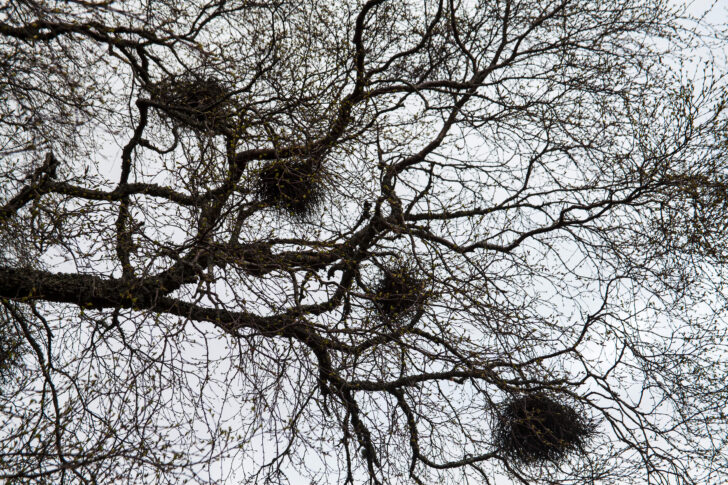
Witches broom is mostly caused by a fungus growth, but drought, frost, repeated damage and even mutations within the tree can lead to witches broom’s developing. They can continue to grow for years, however whilst they tend not to cause a great risk to the plant, they can grow so large they overtake a trees canopy. But this is the best time to look up and look closely and see what secrets your local trees might be hiding.
Barn owls
As the temperature drops, food availability for many species gets scarcer. Lots of creatures go into hibernation, however luckily for the barn owl, mice, voles, and shrews do not hibernate, although they do slow down and their communications reduce, making it harder for barn owls to find them. These birds cannot slow down, they need to keep eating in order to maintain enough energy to keep them warm.
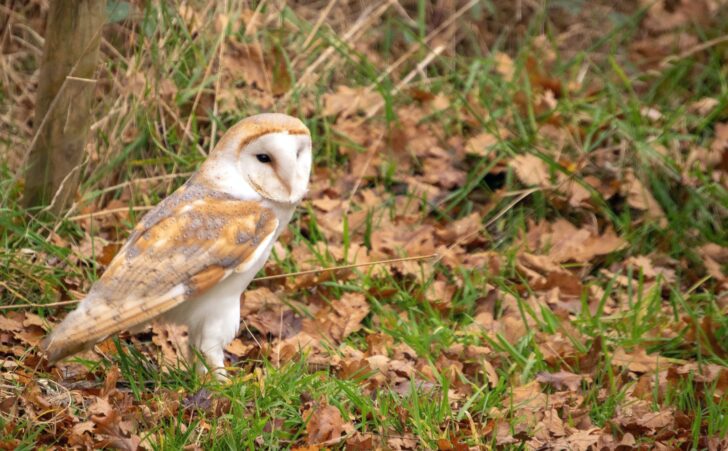
Barn owls increase their territories in order to find food, using their in-depth knowledge of their home range to know where they are more likely to have success. Some bird’s ranges can be up to 5,000 hectares during the winter whilst they try to maintain their body weight. Their feeding behaviour can change too. We associate barn owls with feeding at dusk and throughout the night, into the early hours of the morning. But when food becomes very scarce, you may see barn owls during the day. This is because field voles will become more active during the day in very cold temperatures, so barn owls know they have more luck then. If they cannot locate enough small mammals, they will dine upon small birds instead.
Check those bonfires!
One last point for the winter period: please don’t forget to check bonfires for hedgehogs before lighting. They will now be hibernating, and log, wood and leaf piles make comfortable spaces for them to huddle into, so always check first to avoid harming them.
About the author
Alexandra Pearce-Broomhead is a writer and occasional Guardian Country Diarist from Cornwall. She writes about nature and place, and the human relationship with both. Her work has also been featured on BBC Wildlife and BBC Countryfile.
